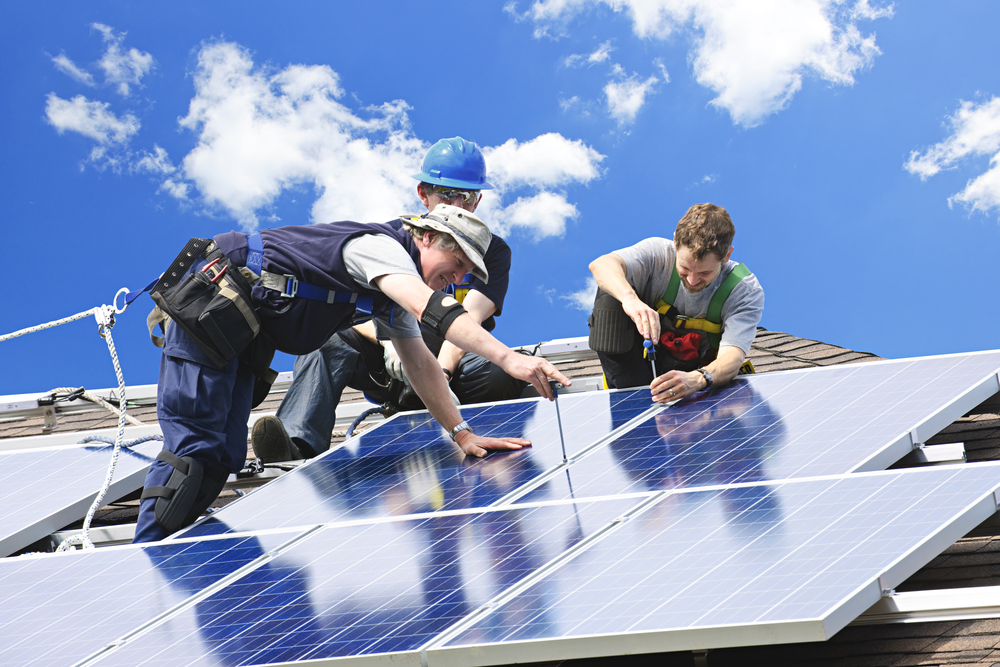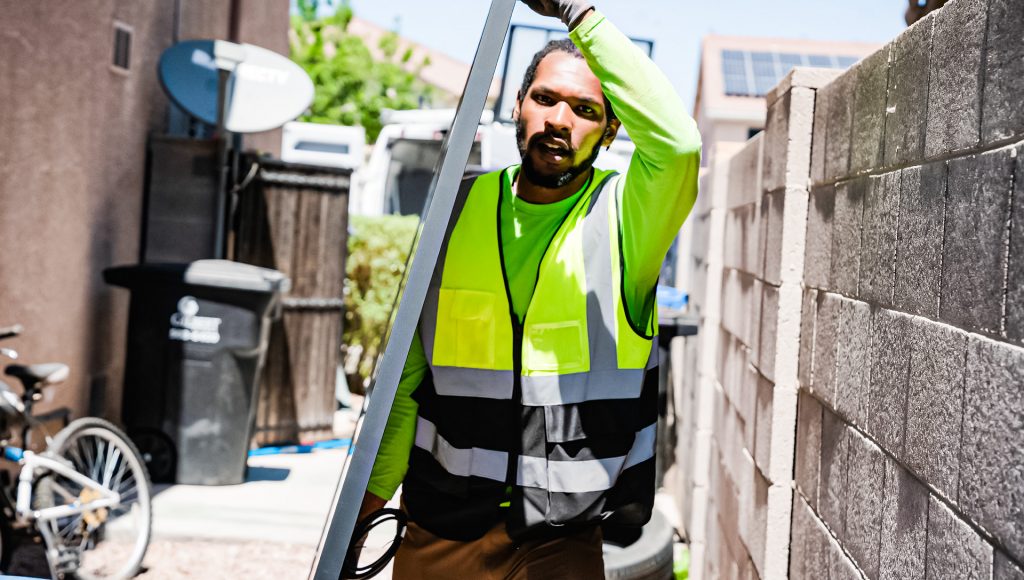You’ve made the decision to go solar, haven’t you?
You’ve realized the potential of converting sunlight into electricity and are ready to take advantage of this renewable source.
It’s a big step towards reducing carbon footprints, and not to mention, slashing those exorbitant utility bills.
But you’re probably wondering about the installation process, right?
How does it all work?
What exactly is involved in adding these shiny panels to your home?
Well, that’s where we come in!
This comprehensive guide will peel back the layers on the solar installation process for you.
From preliminary site assessments and choosing the right equipment to securing permits and getting everything connected – we’ll walk through each step together so there won’t be any surprises along the way.
Let’s get started.
Preliminary Site Assessment
Before you can jump right into installing solar panels, you’ll need to conduct a preliminary site assessment to ensure your home’s suitability for such an upgrade.
This isn’t as daunting as it may sound! It’s essentially about understanding if your roof size, angle and direction are compatible with the installation of solar panels. You’re looking out for how much sun exposure your home gets throughout the day. Remember, more sunlight equals more power generated by your potential solar system.
Now, don’t feel overwhelmed; there’s plenty of help available. Professionals will assess factors like shading from nearby buildings or trees that might obstruct direct sunlight, the structural integrity of your roof to handle the weight of the panels, and even local laws related to solar panel installations.
They’ll take care of all these technicalities so you can sit back and envision a brighter future powered by clean energy. The goal here is not only saving on electricity bills but also contributing towards preserving our beautiful planet…and let’s be honest, that feels pretty good!
Choosing the Right Equipment

Selecting the appropriate gear for your renewable energy setup is a critical step that can significantly influence your system’s efficiency and longevity. It’s like picking out the perfect outfit; you want it to look good, but it also needs to be comfortable and functional.
With solar panels, you’re looking at factors like size, capacity, quality, and compatibility with other components of your solar energy system. But don’t worry! You don’t have to be a technical whiz to make these choices; just remember that it’s all about balancing cost-effectiveness with performance.
Now when choosing equipment such as solar panels or inverters, consider their brands’ reputation in terms of reliability and warranty conditions. Think about how long they’ve been in business – companies with a history tend to produce more reliable products because they’ve had time to refine them through experience.
Securing Permits and Documentation
Navigating the sea of paperwork might seem daunting, but it’s a crucial step in your green energy journey. This phase of setting up solar power involves securing permits and documentation, which can vary depending on where you live.
You’ll need to ensure that everything is in order before construction begins to avoid any hiccups. It may feel like a mountain of red tape, but remember, each piece serves as a building block towards your environmentally friendly goal.
Don’t let this process intimidate you! While there are many documents involved, from local permits to interconnection agreements with your utility company, think of them as love letters for Mother Earth; each one is an affirmation of your commitment to sustainability.
And remember—you’re not alone on this journey; many solar installation companies offer services to help manage these tasks. So take a deep breath and dive in – the world (and future generations) will thank you for it!
Actual Panel Mounting
Once you’ve conquered the paper mountain, it’s time to roll up your sleeves and get hands-on with the actual panel mounting. This is where things really start to take shape. But don’t stress – while this might seem like an intimidating task, with careful planning and a bit of elbow grease, you’ll be well on your way to harnessing that sweet, sweet solar energy.
The process starts by setting up a sturdy support structure for your panels – usually using metal racking systems – which are securely bolted onto your roof or ground mount.
Now, let’s talk about attaching those shiny new solar panels! You’ll carefully lift each one onto the mounted rack and secure them in place using the provided hardware. It’s critical that these babies are snug and safe; after all, they’re going to be catching some serious sun rays for many years to come!
Once each panel is secure, it’s time for a little electric magic as you connect them together in a series or parallel circuit – depending on your system design – ready to convert sunlight into usable power. Keep in mind that safety is paramount here; if you’re not confident handling electrical work, don’t hesitate to call in a pro.
Remember: this isn’t just any DIY project—it’s an investment into your future.
Electrical Connections and Setup

Alright, it’s time to tackle the heart of your renewable energy beast: the electrical connections and setup. This is where you really start to see the magic happen as your solar panels transform from mere structures into powerful energy generators. But don’t be daunted; although this might sound like a job for an electrician, you’ll find that with some careful preparation and guidance, it’s entirely manageable.
Firstly, each of your solar panels will have two wires coming out of them – one positive (+) and one negative (-). These need to be connected in series or parallel depending on your system requirements. The combined wires then run into an inverter which converts the direct current (DC) produced by your panels into alternating current (AC) that can be used within your home.
Now add a battery bank if you want to store excess power for later use. It’s crucial here to pay close attention when making these connections; after all, safety should always come first. Pretty soon though, you’ll have everything humming along nicely – just imagine that sweet feeling of satisfaction when you flick on a light switch knowing it’s powered by Mother Nature herself!
Inspection and Approval
After all your hard work, it’s finally time for the inspection and approval, the moment of truth where you see if your efforts have truly paid off. This is when a professional inspector comes to thoroughly check your solar installation and ensure everything is safe and up to code.
The anticipation might make you nervous, but remember, this process isn’t about finding faults or errors, but rather confirming that you’ve done an excellent job. It’s a crucial step on your journey towards clean energy independence.
During the inspection, they’ll scrutinize every aspect of your installation from the positioning of panels to wiring connections. They’ll also verify whether all necessary permits were obtained prior to installation.
If there are any issues or discrepancies found during this phase – don’t fret! It’s not a failure but an opportunity for learning and improvement. You’re part of something bigger here; contributing towards a more sustainable future one solar panel at a time!
So take in stride any adjustments that may be required – after all, perfection often needs fine-tuning along the way!
Connection to the Power Grid
So you’ve aced the inspection, now it’s time to get hooked up to the power grid! This is a thrilling stage in your solar journey where your home becomes a mini powerhouse, generating its own electricity.
It’s not as complicated as it sounds – your solar provider will handle most of the work. They’ll coordinate with your local utility company and arrange for an interconnection agreement. This fancy-sounding term simply means that you’re allowed to connect your shiny new solar panels to the power grid.
Now, what happens next might feel like something out of a sci-fi movie. Once everything’s set up correctly and safely, there’s this magical moment when you flip the switch and – voila – your house is running on sunbeams!
You’re now part of a growing community who are taking control of their energy needs while caring for planet Earth. And remember, any surplus energy you generate gets fed back into the grid; so not only are you benefitting yourself but also those around you.
Isn’t that amazing?
